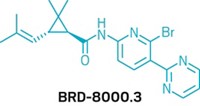Advertisement
Grab your lab coat. Let's get started
Welcome!
Welcome!
Create an account below to get 6 C&EN articles per month, receive newsletters and more - all free.
It seems this is your first time logging in online. Please enter the following information to continue.
As an ACS member you automatically get access to this site. All we need is few more details to create your reading experience.
Not you? Sign in with a different account.
Not you? Sign in with a different account.
ERROR 1
ERROR 1
ERROR 2
ERROR 2
ERROR 2
ERROR 2
ERROR 2
Password and Confirm password must match.
If you have an ACS member number, please enter it here so we can link this account to your membership. (optional)
ERROR 2
ACS values your privacy. By submitting your information, you are gaining access to C&EN and subscribing to our weekly newsletter. We use the information you provide to make your reading experience better, and we will never sell your data to third party members.
Biological Chemistry
Collaborative Study Yields TB Drug Leads
ACS Meeting News: Scientists combine sets of information to identify small molecules that defeat the tuberculosis bacterium in lab studies
by Aaron A. Rowe
April 4, 2011
| A version of this story appeared in
Volume 89, Issue 14
Cheminformatics firm Collaborative Drug Discovery (CDD) has used a genomic and computational approach to identify promising leads to drugs for treating tuberculosis. Doctors need new medications to fight tuberculosis because the Mycobacterium tuberculosis microbe that causes the disease is terribly good at becoming drug resistant. CDD has huge vaults of medicinal chemistry data. And Johns Hopkins University School of Medicine has a lot of data about the mycobacterium’s metabolic enzymes. By putting the two sets of information together, a research team was able to identify small molecules that can defeat the pathogen in vitro, announced CDD’s CEO, Barry A. Bunin. In the study, Johns Hopkins researchers first identified metabolic enzymes that humans don’t have and that M. tuberculosis can’t live without. Next, a scientist at CDD picked through the medicinal chemistry data looking for molecules that resemble the substrates of those enzymes. Then CDD researchers tested some of the substrate analogs on cultured tuberculosis cells. Two of the compounds from CDD’s initial screen, JFD01307SC and L-methionine-S-sulfoximine, worked well in the lab (mBio, DOI: 10.1128/mBio.00301-10). CDD scientists are now testing the compounds on a variety of tuberculosis strains in hopes they will lead to new tuberculosis medications.






Join the conversation
Contact the reporter
Submit a Letter to the Editor for publication
Engage with us on Twitter